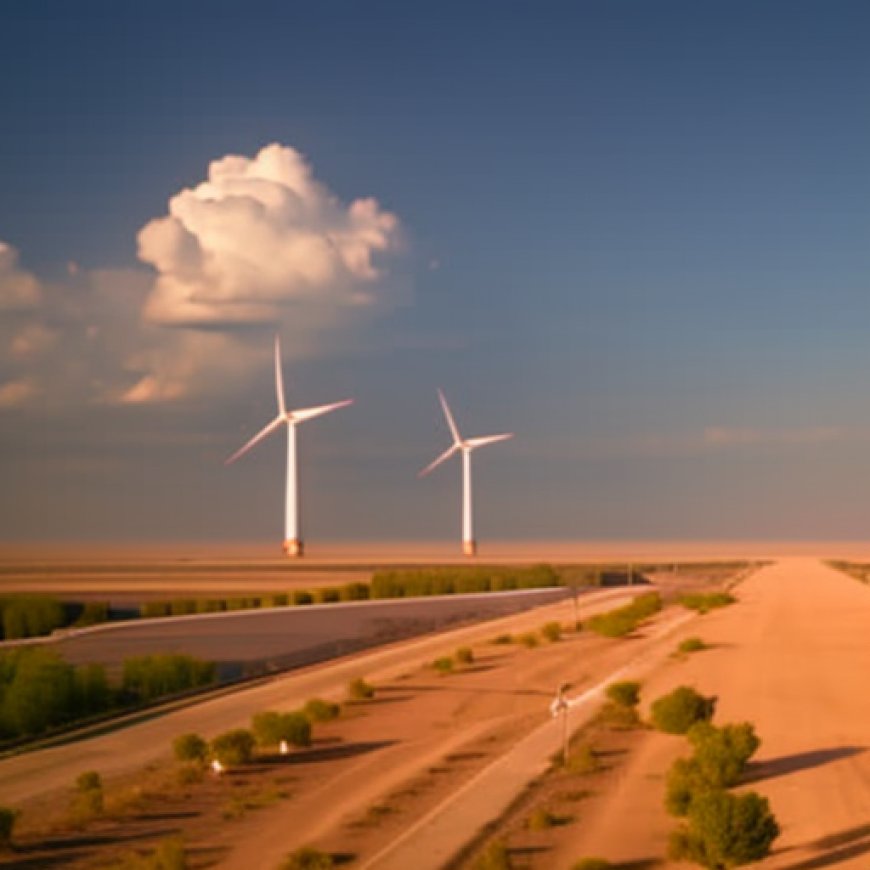Outlook for Green Energy Growth in Central Asia – The Astana Times
Outlook for Green Energy Growth in Central Asia Astana Times


Rapid progress of renewable energy in Kazakhstan
Kazakhstan’s renewable energy sector has been evolving for over a decade, gradually becoming more prominent in the country’s energy landscape. Kazakhstan ratified the Paris Climate Change Agreement and adopted the Carbon Neutrality Strategy by 2060, indicating a strong commitment to sustainable practices. The government is engaged in several significant international projects in renewable energy.
Renewable Energy Facilities in Kazakhstan
- 48 wind power stations with a total capacity of 1,107.5 MW
- 43 solar power stations with a capacity of 1,148 MW
- 39 hydropower stations with a combined capacity of 269.605 MW
- 3 biogas power stations with a capacity of 1.77 MW
The cumulative installed capacity exceeds 2.5 gigawatts. In the first half of 2023, these renewable energy facilities generated 3.35 billion kilowatt-hours (kWh) of electricity.
Potential for Renewable Energy Sources in Kazakhstan
- Potential for small hydropower: 4,800 MW for power stations up to 35 MW and 2,707 MW for those below ten MW
- Potential for annual electricity generation from small hydropower: 65 billion kWh
- Potential wind energy: over 1,820 billion kWh
- Potential solar photovoltaic energy: 6,684 terawatt-hours per year
Kazakhstan also has potential in biogas technologies, solid waste processing, and harnessing wave energy, tidal energy, and tidal currents from the Caspian Sea.
Solar and wind power stations under construction in Uzbekistan
Uzbekistan holds an impressive combined renewable energy potential of 2,091 billion kWh for electricity production, which is 30 times higher than its annual consumption. The country has signed agreements with international companies for the construction of solar and wind power stations, with a combined capacity of 7,047 MW. Currently, 19 solar energy projects with a total capacity of 3,977 MW and seven wind power stations with a combined capacity of 3,100 MW are in progress. By 2023-2024, seven solar and wind power stations with a combined capacity of 2,797 MW are expected to be commissioned.
Tajikistan ranks sixth worldwide in green energy production
Tajikistan boasts significant potential in hydropower, ranking highest in Central Asia. The country’s hydropower resource reserves are estimated at 527 billion kWh annually. Hydropower stations generate 98% of the country’s electricity, positioning Tajikistan as the sixth-largest producer of green energy worldwide. Tajikistan aims to advance in solar and wind energy development, along with geothermal energy and bioenergy.
Kyrgyz Republic’s potential for hydrogen energy
The Kyrgyz Republic has unique conditions for using green technologies. The country’s annual potential for renewable energy sources is estimated at 5,000 million kWh from water sources, over 490 million kWh from solar sources, and 45 million kWh from wind sources. The construction of a 100 MW wind power station and a 300 MW solar power station is already underway. The Kyrgyz Republic also signed an agreement for the joint construction of a hydroelectric power plant with Kazakhstan and Uzbekistan.
Turkmenistan’s plans for solar panel production
Turkmenistan is embracing renewable energy sources, including domestic solar panel production. The country has plans to construct a 10 MW hybrid solar-wind power station and a 100 MW solar photovoltaic station. Turkmenistan is also considering investments in the hydrogen sector.
Renewable energy development in Central Asian countries is crucial for achieving the Sustainable Development Goals (SDGs). It not only helps meet the rising energy demand but also mitigates the adverse environmental impact of fossil fuel consumption. The cost of renewable energy sources, particularly solar and wind power, is projected to significantly reduce by 2040, making clean energy production more cost-effective than gas production. Green energy is poised to become the preferred path for development, serving as a sustainable solution to meet the world’s ever-growing energy needs.
SDGs, Targets, and Indicators
SDGs Addressed in the Article:
- SDG 7: Affordable and Clean Energy
- SDG 9: Industry, Innovation, and Infrastructure
- SDG 13: Climate Action
Targets Identified Based on the Article:
- Target 7.2: Increase substantially the share of renewable energy in the global energy mix
- Target 9.1: Develop quality, reliable, sustainable, and resilient infrastructure
- Target 13.2: Integrate climate change measures into national policies, strategies, and planning
Indicators Mentioned or Implied in the Article:
- Installed capacity of renewable energy facilities (MW)
- Electricity generation from renewable energy facilities (kWh)
- Potential for small hydropower (MW)
- Potential for annual electricity generation from small hydropower (billion kWh)
- Potential for wind energy (billion kWh)
- Potential for solar photovoltaic energy (terawatt-hours per year)
- Solar radiation (kW/m2)
- Capacity of solar and wind power stations under construction (MW)
- Capacity of solar and wind power stations expected to be commissioned (MW)
- Hydropower resource reserves (billion kWh)
- Capacity of hydrogen power stations (MW)
- Capacity of solar panel production (MW)
Table: SDGs, Targets, and Indicators
| SDGs | Targets | Indicators |
|---|---|---|
| SDG 7: Affordable and Clean Energy | Target 7.2: Increase substantially the share of renewable energy in the global energy mix |
|
| SDG 9: Industry, Innovation, and Infrastructure | Target 9.1: Develop quality, reliable, sustainable, and resilient infrastructure |
|
| Target 9.1: Develop quality, reliable, sustainable, and resilient infrastructure |
|
|
| SDG 13: Climate Action | Target 13.2: Integrate climate change measures into national policies, strategies, and planning |
|
Behold! This splendid article springs forth from the wellspring of knowledge, shaped by a wondrous proprietary AI technology that delved into a vast ocean of data, illuminating the path towards the Sustainable Development Goals. Remember that all rights are reserved by SDG Investors LLC, empowering us to champion progress together.
Source: astanatimes.com

Join us, as fellow seekers of change, on a transformative journey at https://sdgtalks.ai/welcome, where you can become a member and actively contribute to shaping a brighter future.







